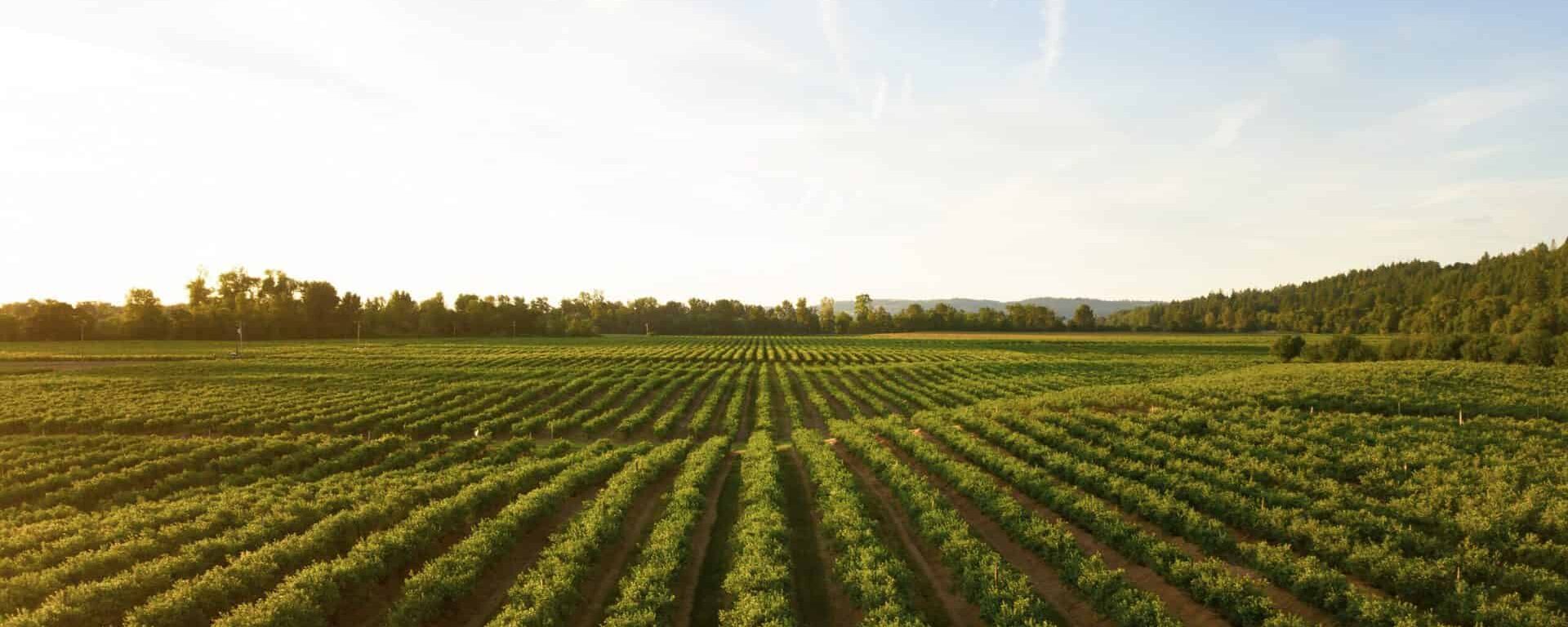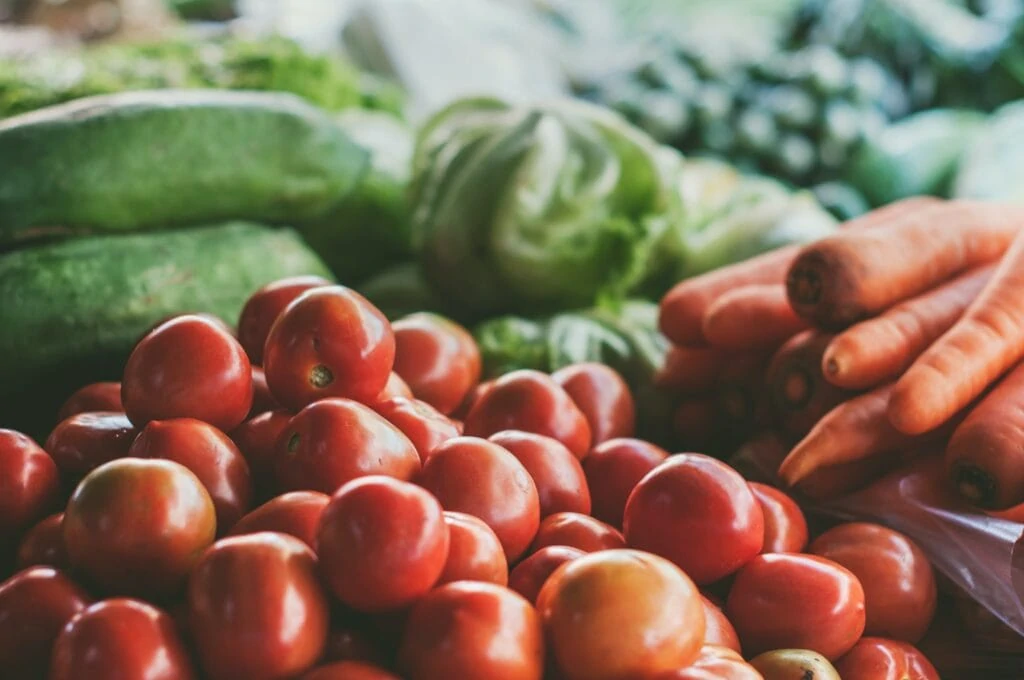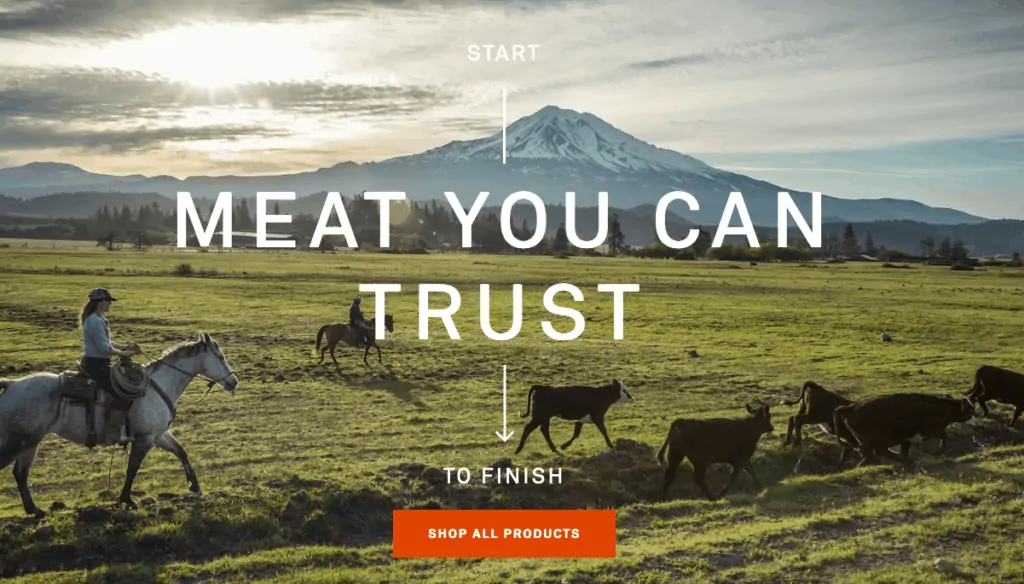
It’s no secret that our food production process has a huge impact on the environment.

With agriculture contributing a whopping 25% of carbon dioxide emissions from humans, it’s clear that something needs to shift if we want to keep getting our food without compromising the land that it’s grown on (and if we also want our foods to actually be nutritious, instead of depleted!).
Obviously, our food and our health are pretty closely linked, which makes it more important now than ever to consider where you’re getting your foods, just as much as what foods you’re eating.
Eating organically is the first step in reducing carbon dioxide emissions. Now, let’s take it a step further and take a look at a better way of farming that actually helps the land to recover: regenerative agriculture.
Eating foods that have been grown through regenerative agricultural practices means supporting practices that are actively working to improve our environment. And even better, choosing foods grown from places that practice regenerative agriculture means that not only are they better for the health of our environment, but they’re also better for our health as consumers!
There’s a lot to cover here, so let’s dive into how regenerative agriculture is changing the game for both sustainability and food quality.
What is Regenerative Agriculture?
To better understand regenerative agriculture, it helps to take a look at why traditional agricultural practices are so harmful for the environment.
A lot of this has to do with carbon dioxide. When plants are left alone, thye use carbon dioxide (CO2) from the environment for photosynthesis, which is then recycled back into the soil as plants decay, creating a beneficial cycle.
In the process of growing food, however, modern agricultural practices actually release carbon from the soil in the form of carbon dioxide, contributing to the “greenhouse gas” effect as it accumulates in the atmosphere. [*]
Not to mention, modern agriculture methods not only release carbon from the soil, but also strip it of its essential minerals … which then equals less mineral density in our food! Many people don’t realize it, but this can have a huge impact on health, since we’re lacking the major mineral punch we used to get from food, leaving us deficient if we aren’t supplementing.
As you can probably guess from the name, regenerative agriculture looks instead to change the way we farm in order to minimize this carbon output, while also keeping soil well-mineralized.
To do this, farmers who follow regenerative agriculture follow a set of practices that aim to minimize the amount of carbon dioxide emitting from the soil. According to Regeneration International, the main practices of regenerative agriculture include:
- Minimizing tillage. Tilling (pulverizing) the soil and other organic matters during farming aerates the soil, but it also increases the amount of CO2 emissions in the practice. In regenerative farming, you either don’t till at all or just till a minimal amount (for example, if you’re dealing with hardpan earth that needs to be loosened).
- Increasing soil fertility without damaging fertilizer. Instead of using fertilizers that have been found to contribute to climate change, regenerative agriculture uses other methods for increasing soil fertility, including the use of natural compost and animal manure instead.
- Building ecological diversity. Practicing regenerative agriculture also means planting different crops in rotation to which can help prevent the nutrient buildup that occurs when you plant only one kind of crop in the soil. You would also plant cover crops, which literally “cover” the soil to prevent soil erosion that can happen when it’s exposed to the elements.
- Practicing responsible grazing. Regenerative agriculture isn’t limited to the crops alone. By allowing animals to graze freely in regenerative agriculture, rather than using grain-based feeds, it actually stimulates natural plant growth and keeps carbon in the soil, rather than emitting it as CO2.
Why Is Regenerative Agriculture So Beneficial For The Environment?
Because regenerative agriculture puts a major focus on naturally adding nutrients to the soil, it means that farms that follow these practices can actually improve the environment while still making crops and meats to feed us.
In fact, regenerative farming can be so beneficial for the earth that Belcampo Farms, a meat company that practices regenerative agriculture and grazing, actually found a huge increase in their soil carbon over the years, boasting a whopping 19.22% average increase!
And that’s just one farm. One study estimates that if we replaced all of our current damaging farming practices to regenerative farming practices intent on protecting the soil, rather than depleting it, it could offset up to 5.5 billion tons of greenhouse gases every single year! [*]
In an industry where you so often see the opposite, it’s incredibly promising to find that choosing a different technique for growing plants and feeding farm animals can actually improve the condition of the earth, rather than destroy it.
Why Regenerative Agriculture Is Healthier For You
Just as regenerative agriculture is healthier for the environment, the increased health of the animals also means better health for the consumers who buy their meat!
There are plenty of studies that have found that grass-fed and pasture-raised animals mean healthier meats for us:
- When comparing grass-fed beef to beef from cows that are raised on traditional grain feed, grass-fed beef tends to have less overall fat, but more of the healthier omega-3 fatty acids and antioxidants – both of which are great news for keeping your heart healthy. [*]
- Free-range chickens are also happier – and therefore healthier – than their cage-fed counterparts. One study found that the meat from free-range chickens that fed on grass and mealworms had higher quality, plus the chickens themselves also had a healthier gut microbiota. [*]
- The same goes for pork. Another study evaluating the effects of pasture grazing on pigs found that pigs with access to the outdoors led to meat that had less unhealthy saturated fat, more healthy polyunsaturated fats, and more Vitamin E. [*]
So it’s proven that high-quality living actually leads to higher-quality meats in the end. Ultimately, happier, raising healthier animals is good news for the health of the earth and for everyone who eats them.
(And P.S.: I order my meats exclusively from Belcampo, the farm I mentioned earlier, where every single step of the process of getting the meat to your table is done with care, no added hormones or synthetics, and arriving from happy animals allowed to graze freely. Check them out below AND use CODE: PRIMAL10 for 10% OFF!)

To Recap
- It’s becoming increasingly clear that even though we need to eat, we also need to figure out smarter ways to handle agriculture so that it doesn’t increase our burden on the planet.
- Regenerative agriculture is a better solution for producing crops without increasing our carbon dioxide emissions from traditional tilling and farming practices.
- Regenerative agriculture can be so effective that it can drastically increase carbon soil, rather than carbon dioxide emissions!
- Happier animals = healthier meats = healthier consumers. Choosing meat from animals that are grown in free-range conditions can mean higher quality and better nutrition composition.
